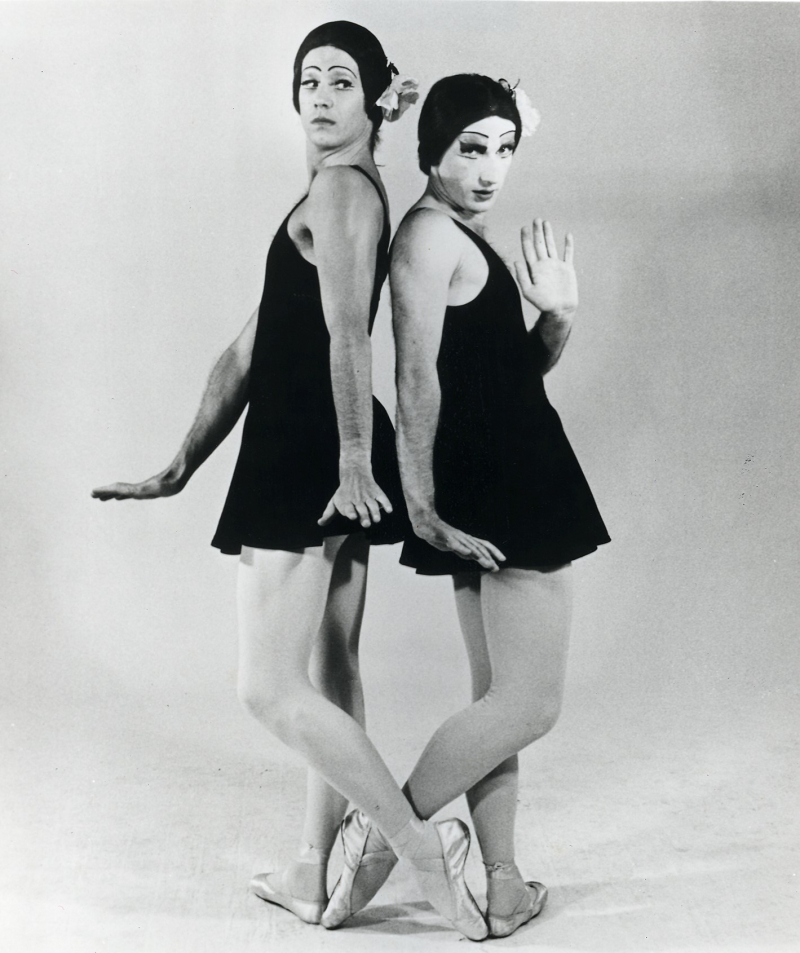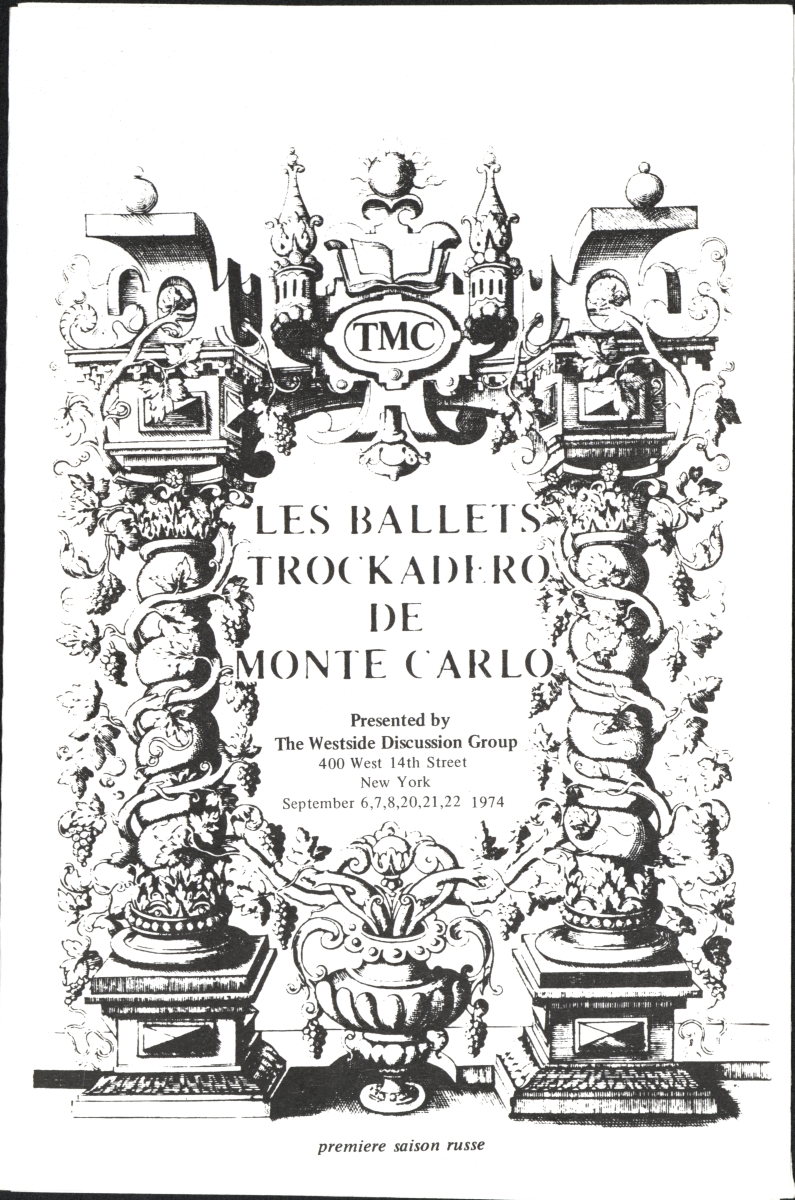Interview: Theatre Life with Peter Anastos
The co- Founder of Les Ballets Trockadero de Monte Carlo on the company's legacy and more.

Today’s subject Peter Anastos has been living his theatre life as one of the co-Founders of Les Ballets Trockadero de Monte Carlo. The all- male dance troupe has been parodying the classics of ballet for 50 years now. You can see the company in action for three performances only from April fourth through sixth in the Opera House at Kennedy Center.
From the company’s inception, Peter has choreographed many of it’s most well- known pieces. “Go For Barocco” is an example of this.
Peter Anastos’ career has not been limited to just Les Ballets Trockadero de Monte Carlo. He studied in New York and Leningrad and began choreographing for various companies including Eglevsky's, and also Dallas and Pennsylvania Ballets. Between 1979 and 1981 he was resident choreographer of Garden State Ballet, in 1983 of Santa Fe Opera, then between 1994 and 1996 he was artistic director of Cincinnati Ballet. He then continued to work extensively as a freelance choreographer, his works including Cinderella (with Baryshnikov for American Ballet Theatre, 1983), The Lost World (mus. Peter Golub, for Miami City Ballet, 1992), Peter Pan (for Ballet West and Cincinnati Ballet, 1994), and several works for the Santa Fe Festival Ballet, including By Gershwin (mus. Gershwin, 1999). He also has choreographed for musicals and directed opera.
50 years in, Les Ballets Trockadero de Monte Carlo continues to delight. Peter Anastos is a huge reason for the company’s success to be sure. Please consider seeing Les Ballets Trockadero de Monte Carlo at Kennedy Center this week and see for yourself.
How did Les Ballets Trockadero de Monte Carlo come into being?
The Trockadero was formed in August 1974 by a group of balletomanes, myself, Natch Taylor and Antony Bassae. I had been going to the ballet nightly (twice on Saturday and Sunday) for years, was a huge fan of NYCB and the Royal Ballet and we were inspired by the magic and glamor and fantasy of the ballet. Dyed in the wool is an understatement. I had read all the crazy biographies and autobiographies of Russian and European dancers and was steeped in ballet lore. Every obscure book I could find was devoured and used as fertile material for the Trockadero Ballet. We gathered a company of dancers around us and started performing. We didn't go through any "regular channels," but simply declared ourselves Prima Ballerinas Absolutely!

in Les Ballets Trockadero de Monte Carlo's Go for Barocco.
Photo by Lee Snider.
What was the program for the company's first season?
I choreographed my first ballet that season, "Go for Barocco," a parody of Balanchine's Concerto Barocco, and it's still being danced by the company. That amazes me more than anything. We also danced Swan Lake, Act II in a version from the Sadlers Wells Ballet. We danced all the real steps, but of course inserted a lot of bits and gags to make it a parody. It didn't need much pushing! We also performed my one-act version of Don Quixote because I was the only one who had music beside the Pas de Deux. I had been in Russia watching the ballet in 1972 and bought a 33rpm LP vinyl of highlights from Don Q. No other recording existed, certainly not in the West. We used it for our one-act version and people were amazed. We channeled all the old dancers' habits and mannerisms from the 19th century, based mostly on inspiration and love of history.

premiere performance.
Photo courtesy of the company.
For those not familiar with Les Ballets Trockadero de Monte Carlo, can you please give us a brief overview of the company?
The Trockadero was formed by balletomanes to send up and parody classical ballet --- and later, modern dance. We all loved ballet deeply and our parodies were always deeply reverent for the art, but irreverent in performance practice. We were channeling the old-time ballet as it existed in the 19th century and of course the Diaghilev Ballets Russes. Over the top, dramatic, hysterical, crazed, careening around the stage, wild eccentricities, but always faithful to the choreography and music. We wanted the audience to laugh WITH us and to enjoy ballet. We brought laughter and a kind of goofy broken-down Touring Trunk Sensibility to the stage. People loved us right away. We were a breath of fresh air, and we really knew our stuff!
What is the process in creating a piece for Les Ballets Trockadero de Monte Carlo?
As the principal choreographer for the company during its formative years, I have to say that making a ballet for the Trockadero is exactly like making a ballet for anyone else. You have an idea for something, an inspiration, a plan of action and you have a group of very funny and talented comedians in front of you. The trick is knowing how to go far enough without going too far. Pratfalls and rough comedy are not funny after 5 minutes. The humor and the comedy MUST come out of the choreography and the inspiration for a parody. When making parodies of Balanchine or Robbins or Petipa, I always kept in mind the central operating force of the originals, the style and substance of the ballets themselves. If you understand that, you can make a good parody. But understanding the SOURCE is the most important part of comedy. We never tried to make fun of anyone or any individual dancers, it was always about the natural suspension of disbelief that defines ballet. It's a fantasy already. It's not real, it's the world of the imagination and the art of artifice.

Photo by Zoran Jelenic.
As Les Ballets Trockadero de Monte Carlo is celebrating 50 years of performance, what are some of your fondest memories of the company?
There are so many great memories from the early years. Our debut, a makeshift theatre in a loft over a meat-packing factory on far west 14th St.
Our first audiences of ballet fans who came downtown for our midnight curtains after seeing the ballet at Lincoln Center.
Our first reviews, some devastatingly negative, some cheering us on to greater heights.
Our first out-of-town tour date, South Bend, Indiana! We all said good-bye to our friends and thought we'd never come back alive.
Our debut on Broadway at The Palace Theatre in 1976. I suppose that was our contribution to the Bi-Centennial.
One funny story: After a performance in a dumpy little theatre in SoHo we were visited backstage by Mme. Stravinsky, the widow of composer Igor Stravinsky. She loved the show! But she added, "Very nice, very good......but you know, dear, we used to do this kind of thing all the time in St. Petersburg, BEFORE the Revolution..."
After I left the company, they began to do substantial international tours. The Trocks are very well known throughout Europe, in the Far East, in South America, even in Russia. It's very rewarding for me to know I founded this company 50 years ago and it's going bigger and stronger than ever. None of us at the time thought it would last so long. I guess it's a testament to the enduring strength of Ballet as an art and to people's unquenchable desire for laughter and happiness.
Special thanks to Kennedy Center's Senior Press Represenitive Brittany Laeger for her assistance in coordinating this interview.
Theatre Life logo designed by Kevin Laughon.
Comments

Videos

.gif)